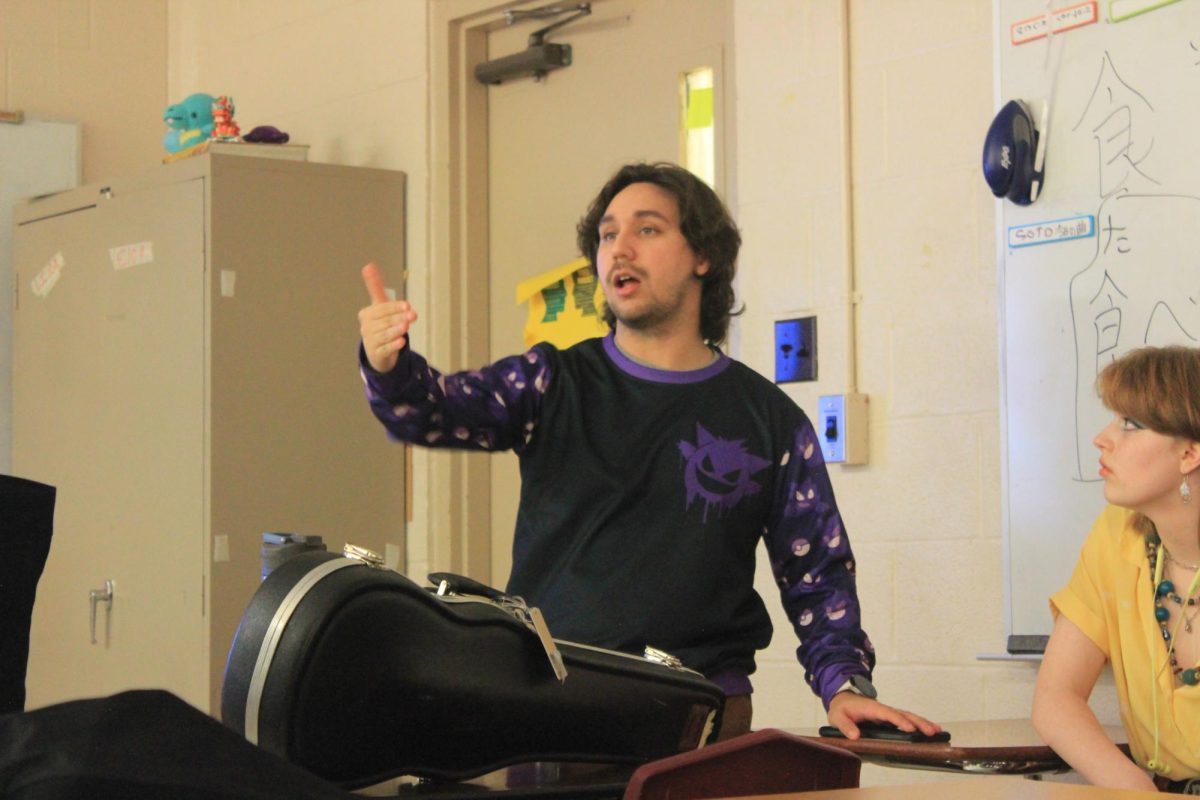Every day students have classes with the same teachers they’ve had all year. Occasionally a teacher may get sick or go on vacation, but they always return within a few days. But what happens when a teacher is gone for longer? During the second semester of the 2023-2024 school year, English I and Genre Literature teacher Ellen Dunn-Kreitlein and Japanese teacher Dylan Lira will both be on leave for at least six weeks, leaving their students with a long-term substitute.
“[Dunn will be on leave] at least 6 weeks, potentially longer,” Reeves Bauer, Dunn’s long-term sub said. “The plan is that she’s trying to be out for most of the remainder of the year, but she may have to come in for a couple of days every now and then.”
In Dunn’s absence, Reeves Bauer serves as her substitute. Bauer was Dunn’s student teacher for her English classes during the first semester. Bauer was selected as Dunn’s sub because he was already familiar with many of Dunn’s students.
“Last semester I was actually [Dunn’s] student teacher,” Bauer said. “While I was doing that we decided that it would probably be best that I be her long-term sub because I already know all of the students in the English classes and even though I don’t know the students in the Genre Literature classes, I know how the class goes and it’s a small class.”
In order to prepare their students for their leave, both Dunn and Lira informed their students that they’d be on extended leave in advance. Lira expedited his lesson plans so that students would be done by spring break in anticipation of when he’d be going on leave. Bauer noted that compared to the first semester, Dunn’s assignments now are more independent from a teacher.
“I expedited the entire school year, believe it or not,” Lira said. “I told everyone from the beginning of the year ‘I’m gonna be taking my leave in the second semester, we’re going to kind of bump up all of the expectations.’ I raised the expectations up a level, not too much, nothing unrealistic and kind of expedited the year’s curriculum so that we would be done by spring break.”
Though the teachers won’t be in class, they will still be able to communicate with their students through Microsoft Teams and email. Dunn also communicates with Bauer, who passes messages to students for her. Lira instituted a system of weekly check-ins, similar to ones he implemented when classes were virtual during COVID.
“We’ll have virtual check-ins everyday,” Lira said. “It’ll be similar to how I operated during [the] virtual [year]. We had something called asynch[ronous] Thursday. I uploaded a check-in for you, I gave you something to look at and basically the expectation was if you opened up the form and did the check-in, I incorporated sort of questions or instructions that let me know if you actually did what you were supposed to do. Sometimes it was as simple as ‘Are you reading this question? If so, go back to the first text box and type the word buffalo’ or something like that. Something silly like that. Just to let me know that you’re making an effort to be engaged.”
While on leave, Lira and Dunn will allow their students more independence. Lira hopes to teach his students to be more self-sufficient.
“Thankfully, we incorporate throughout every school year, as I teach, an asynchronous day,” Lira said. “Once a week I tell my students, ‘This day you’re expected to be on your own. I’m here for questions, I will help you, I’ll look over your notes or your work, but I want you to get a little bit more independence as a student.’”




































